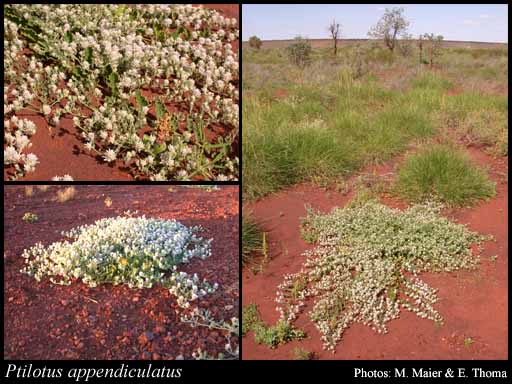- Reference
- Muelleria 1:102-103 (1959)
- Conservation Code
- Not threatened
- Naturalised Status
- Native to Western Australia
- Name Status
- Current
Prostrate perennial, herb, 0.04-0.15 m high, leaves ovate-lanceolate, 7-100mm long, 3-25mm wide; spike pink, ovoid to cylindrical, 10-35mm long, 12-33mm wide; bract 5-8mm long; bracteole 5-8mm long; tepals 11-13.5mm long, 25-35mm wide; fertile stamens 2, staminodes 3; ovary hairy; style falcate-straight, 2.5-4.5mm long. Fl. pink, Jul to Aug.

Scientific Description
Perennial herbs or annuals, stems several, more or less prostrate or more or less erect, persistently hairy, with verticillate or dendritic hairs. Leaves present, 7-100 mm long, 3-25 mm wide, persistently hairy, with verticillate, dendritic or stellate hairs; basal rosette absent; cauline leaves alternate. Spikes pink or magenta, ovoid or cylindrical, clustered, with densely arranged flowers. Bracts 4-5.5 mm long, coloured, hairy, awned or mucronate, with an obscure midrib. Bracteoles (5-)5.3-7.7 mm long, colourless, hairy, awned or mucronate, with a prominent midrib. Outer tepals 11.3-13.4 mm long, not entire. Inner tepals 10.8-12.7 mm long, glabrous within. Style (2.5-)3.8-4.5 mm long, curved or straight, obliquely fixed to ovary. Distribution: Eremaean Botanical Region; IBRA regions: Carnarvon, Gascoyne, Pilbara.
Distribution
- IBRA Regions
- Carnarvon, Gascoyne, Pilbara.
- IBRA Subregions
- Ashburton, Cape Range, Chichester, Fortescue, Hamersley, Roebourne.
- Local Government Areas (LGAs)
- Ashburton, Carnarvon, East Pilbara, Exmouth, Port Hedland.